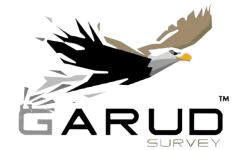Aerial Intelligence For Pipeline Inspection
Pipeline Inspection
The integrity of pipelines is critical in industries like oil and gas, where even a small leak can lead to significant environmental damage and financial loss. Traditional inspection methods, while effective, often involve intrusive procedures and carry inherent risks. Garud Survey addresses these challenges with its advanced monitoring system, offering comprehensive coverage and flexible inspection capabilities tailored to the needs of the industry.
By leveraging cutting-edge technology, Garud Survey provides operators with real-time insights into the condition of pipelines, detecting potential issues such as concealed flaws and excessive vegetation growth. These insights empower decision-makers to prioritize maintenance and repair activities, minimizing the risk of costly disruptions and ensuring the continued reliability of the infrastructure.
In essence, Garud Survey’s monitoring system offers a comprehensive and reliable solution for pipeline inspection, helping industries mitigate risks, optimize maintenance efforts, and uphold environmental stewardship. With its advanced capabilities and proven track record, Garud Survey is a trusted partner in ensuring the integrity and reliability of critical infrastructure worldwide.
Highlights
- Vegetation Indexing to identify possible saltwater leaks
- High-Res up-to-date imagery for ground crew inspections
- Aerial imagery for pipeline inspections for any possible leaks
- Relatively less time & lower costs
- Continued Surveillance of the pipeline to identify patches that are getting worse
- Streamline workflows in significantly less time
use of drone in Pipeline Inspection
Drones have transformed pipeline inspection procedures, providing various advantages over old approaches. Drones are used in pipeline inspection in the following ways:
- Visual Inspections
- Thermal Imaging
- Remote Monitoring
- Access to Remote Areas
- Safety Enhancement
- Data Collection and Analysis
- Leak Detection
- Corrosion Assessment
- Environmental Monitoring
- Documentation and Reporting
